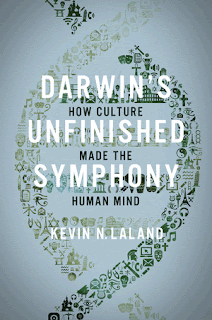 Forging New Freedoms: Nativism, Education, and the Constitution, 1917-1927; and The Chief Justiceship of Charles Evans Hughes, 1930-1941.
Forging New Freedoms: Nativism, Education, and the Constitution, 1917-1927; and The Chief Justiceship of Charles Evans Hughes, 1930-1941.Ross applied the “Page 99 Test” to his new book, World War I and the American Constitution, and reported the following:
From page 99:Learn more about World War I and the American Constitution at the Cambridge University Press website.… The government’s role [in providing insurance] expanded tremendously in September 1917, when Congress enacted legislation to compensate military personnel and their families for disabilities incurred as the result of the war, pay premiums for the death of soldiers and sailors, and provide for the support of families of persons engaged in military service.Although war risk insurance may seem like a narrow topic, page 99 felicitously highlights one of the book’s major themes, which is how the First World War transformed the scope of the federal government and provided the predicate for later federal programs such as social security and Medicare. While the federal government even before the war had expanded its regulatory role in Progressive Era legislation such as the Pure Food and Drug Act of 1906, the exigencies of the First World War persuaded the government to involve itself in activities, such as insurance, that Americans previously had assigned to private enterprise. During the war, congressional legislation and executive orders closely regulated a broad range of activities involving agriculture, manufacturing, mining, transportation, telecommunications, and retailing. The government also mediated labor disputes and issued far-reaching edicts involving working conditions. Businesses generally were amenable to such measures, as page 99 illustrates, because they helped to formulate and administer them and because these laws were structured in ways that enhanced profits. Although the government’s far-reaching involvement in economic activity presented a virtual seminar of constitutional questions involving federalism, separation of powers, due process, the commerce clause, and the taxing power, most measures – including war risk insurance – were never challenged in court. Even though the federal government sharply reduced its economic role after the war (except in its prohibition of alcohol), the scope of federal involvement in economic activity never returned to pre-war levels and surged again beginning with the New Deal during the 1930s.
Since the risk of war-related injury or death was highly speculative, some companies had refused to issue insurance, while others offered additional insurance at rates that were nearly prohibitive. Insurance companies did not object to the federal program and indeed sometimes advised the government about how to structure its insurance plans. The government at first considered paying insurance companies for incremental premiums on policies issued to servicemen, but the self-insured government had no experience in conducting business with insurance companies, and it feared such an arrangement might seem to constitute an endorsement of companies whose business practices were questionable.
Federal insurance replaced the haphazard and highly political pension plans that the government had used to compensate injured military personnel and bereaved survivors in previous wars. Since the Civil War, Congress had approved 50,000 pension bills for injured and aging veterans. Congress typically rubber-stamped bills championed by individual legislators in response to importuning constituents, particularly those who were politically well-connected. On the eve of the enactment of the War Risk Insurance legislation, the House late one night had approved 566 bills during one hour. One commentator expressed hope that the system would avoid the “hazards of hit-or-miss pension laws” and spare veterans from serving as “the political footballs of party politics.…”
Page 99’s discussion of the government’s role in relieving the economic distress of military personnel and their families also complements the book’s analysis of the extent to which the war helped to promote the democratic ideals for which the nation purported to fight. The book demonstrates how the war hastened the women’s suffrage amendment because women made such significant contributions to the war effort and because continued denial of the vote seemed to contradict the nation’s mission to expand democracy. Although the war did not significantly ameliorate racial injustices and in some ways exacerbated them, the book explains how wartime experiences of African Americans and other minorities helped to lay the foundations for the civil rights movement later in the century. The book similarly shows how the government’s harsh repression of wartime dissent resulted in short-term setbacks for civil liberties but helped to generate judicial decisions that provided the basis for modern doctrines of freedom of speech and freedom of the press.
--Marshal Zeringue

















